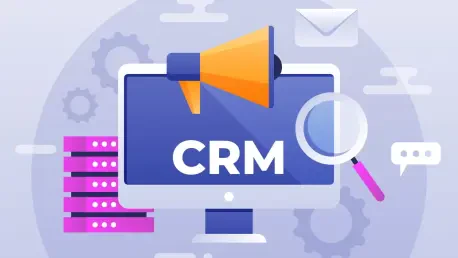Navigating the demands of modernized tax management presents significant challenges, particularly as public expectations for efficient services grow. To address these needs, His Majesty’s Revenue & Customs (HMRC) is embarking on a mission to overhaul its customer relationship management (CRM) system by adopting software-as-a-service (SaaS) CRM solutions. This significant transformation aims to reinvent how citizens engage with tax-related services, promising enhanced capabilities and service delivery improvements. With a budget stretching to £1 billion for a 15-year commitment, HMRC’s strategic shift towards SaaS CRM is poised to set a new standard for public sector operations, fostering innovation and efficiency from citizen interactions to fraud prevention.
Current Landscape of SaaS CRM Adoption
Data and Growth Trends in SaaS CRM Technology
Globally, the adoption of SaaS CRM technology is accelerating at an impressive rate, reflecting both the adaptability and scalability of this solution model. Recent market analysis predicts robust growth in SaaS CRM, estimating market size expansion to reach significant figures in the next few years. These projections underscore the systematic reliance on SaaS solutions as governments worldwide recognize the need to streamline operations. In the public sector, adoption is fueled by data-driven performance metrics and the necessity for more dynamic system integrations, notably within realms where data security and service agility are crucial.
Real-World Applications and Case Studies
Across various organizational contexts, numerous entities have implemented SaaS CRM platforms with marked success. Notable examples include public sector agencies that have significantly improved citizen engagement and operational efficiency through SaaS CRM deployment. Case studies illustrate how solutions facilitated streamlined processes, improved customer satisfaction, and robust data management capabilities. These implementations demonstrate the profound impact on service delivery models, mirroring the intended outcomes HMRC seeks to achieve through its ambitious CRM overhaul.
Expert Insights on SaaS CRM Implementation at HMRC
Delving into expert opinions reveals a complex landscape where challenges and opportunities intertwine in SaaS CRM integration. Industry professionals highlight the intricacies of embedding modern CRM systems within HMRC’s existing frameworks, emphasizing the need for a strategic approach that balances innovation with practicality. Discussions focus on critical aspects such as maintaining service continuity, overcoming legacy system limitations, and leveraging cutting-edge technology to enhance taxpayer interactions. Experts are optimistic yet cautious, recognizing the potential risks and the strategic mitigation essential to capitalize on the benefits of this transformation.
Projecting the Future of CRM Transformation in the Public Sector
Anticipated developments in CRM technology signal transformative potential for public sector interactions and service delivery. Evolving systems promise greater engagement through personalized experiences, leveraging advanced analytics to optimize citizen services. While the prospects are promising, several challenges remain, including adapting technological advances to regulatory changes and securing citizen data integrity. Future scenarios envision enhanced efficiencies and citizen satisfaction yet require caution in implementation and careful oversight to ensure success in meeting public expectations and operational benchmarks.
Conclusion and Considerations for the Future
Reflecting on the breadth of discussion surrounding the SaaS CRM transformation at HMRC, modernization emerges as a crucial pillar for advancing public service delivery. Transformative technologies are poised to redefine citizen engagement, offering pathways to revitalized efficiencies and better-aligned services. Moving forward necessitates a diligent focus on strategic implementation, continuous assessment, and a commitment to maximized benefits while mitigating transition risks. Stakeholders in governmental operations must recognize this pivotal moment and champion efforts that fortify digital transformation, ultimately creating systems that meet both contemporary and future needs. Pursuing this direction promises not only improved service but also enhanced trust between citizens and governmental entities.









